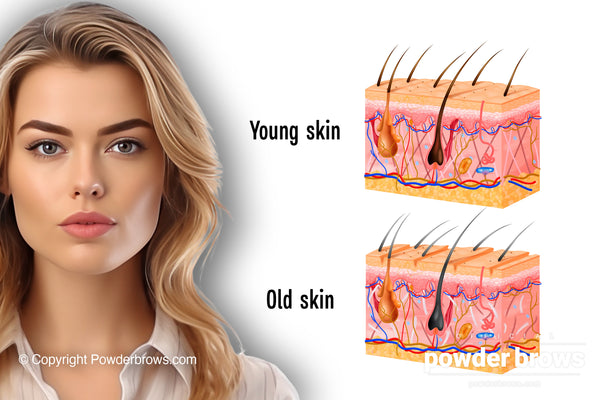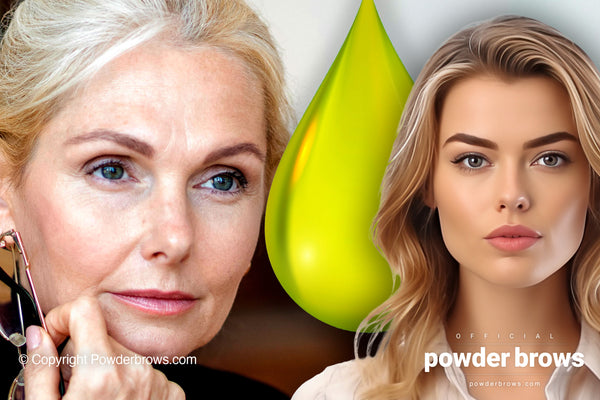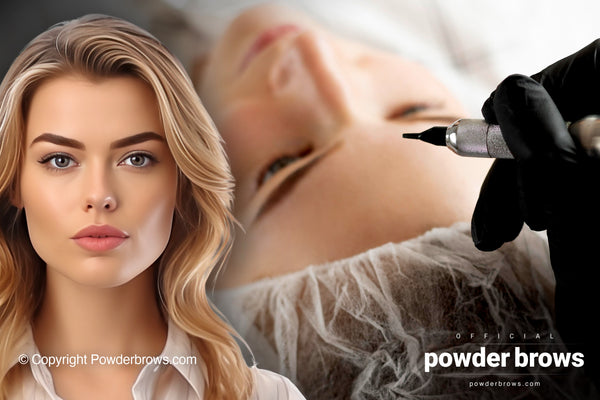6. Conclusions
As skin ages, it undergoes changes like becoming thinner and drier, losing its structure, and slowing down cell regeneration. These factors all influence how Powder Brows are done on mature skin.
For pigment choice, use inorganic pigments instead of organic or hybrid types. Also, pick a color that's 1-2 tones lighter than you'd use for younger skin. Many experienced artists favor pigments with green or yellow undertones and may add an olive modifier if it complements the client's base skin tone. Regarding the seasoned artists we consulted when gathering information for this article, many said they prefer yellow undertone inorganic pigments.
In the drawing phase, lift the endpoint of the brow, but keep the brow shape naturally and not too thick. Many artists even use makeup to fill in the outline, giving the client a clearer idea of the final look.
During the procedure, use fewer layers of pigment than you would for younger skin. The application technique should be gentle, akin to "brushing," to minimize skin trauma. Retention in mature, vascular skin is often excellent.
Be aware of the "effects of gravity." Ask the client to sit up several times during the procedure to get an accurate view of how the brows will look.
For aftercare, keep the brows adequately moist, especially in the first 48 hours. A retouch shouldn't be skipped but can be scheduled later than usual - often after 10 weeks - to ensure the brows have fully healed.
Readers suggest












